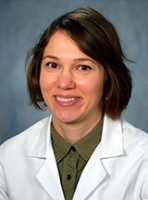
01 Apr Not All Skilled Nursing Patients Seen Promptly By Physicians After Transfer From Hospital
MedicalResearch.com Interview with:
Kira L. Ryskina MD MS
Assistant Professor Of Medicine
Division of General Internal Medicine
Perelman School of Medicine,
University of Pennsylvania
MedicalResearch.com: What is the background for this study? What are the main findings?
Response: Post-acute care in skilled nursing facilities (SNF or sometimes called subacute rehab) is a very common discharge destination after a hospital stay. Patients discharged to these facilities represent more clinically complex and high-need patients than patients discharged home.
We wanted to understand how soon after discharge from the hospital to a skilled nursing facility are patients seen by a physician. We found that first visits by a physician or advanced practitioner (a nurse practitioner or physician assistant) for initial medical assessment occurred within four days of SNF admission in 71.5 percent of the stays. However, there was considerable variation in days to first visit at the regional, facility, and patient levels.
One in five initial physician visits occurred more than 4 days after admission to skilled nursing facilities. In 10.4 percent of stays there was no physician or advanced practitioner visit. Much of the variability in visit timing had to do with SNF characteristics and geography compared to patient clinical or demographic characteristics. Patients who did not receive a physician visit had nearly double the rates of readmissions or deaths compared to patients who were seen.
MedicalResearch.com: What should readers take away from your report?
Response: We anticipated that there might be differences in the timing of physician visits, and that more complex and higher-risk patients would be seen earlier. Instead, we found small differences in visit presence and timing based on patient clinical factors and relatively large differences based on facility factors (such as location). Overall, these findings are concerning because they suggest that elderly patients discharged from hospitals to skilled nursing facilities are not receiving the care they need at a time when they might be particularly at risk for poor outcomes.
MedicalResearch.com: What recommendations do you have for future research as a result of this work?
Response: This study revealed some concerning correlations, but it was not designed to establish cause-and-effect between timely physician visits and patient outcomes. Considering that changing current practices would require large investments from skilled nursing facilities, the next research steps should aim to measure the effect of timely physician visits on patient outcomes such as readmissions to the hospital.
Disclosures: Kira Ryskina’s work on this study was supported by a National Institute on Aging Career Development Award (No. K08-AG052572). Robert Burke’s work was supported by a Veterans Affairs Health Services Research and Development Career Development Award (No. 1IK2 HX001796). The views expressed are not necessarily those of the Department of Veterans Affairs or the National Institutes of Health.
Citation:
Assessing First Visits By Physicians To Medicare Patients Discharged To Skilled Nursing Facilities
Kira L. Ryskina, Yihao Yuan, Shelly Teng, and Robert Burke
Health Affairs 2019 38:4, 528-536
[wysija_form id=”3″]
[last-modified]
The information on MedicalResearch.com is provided for educational purposes only, and is in no way intended to diagnose, cure, or treat any medical or other condition. Always seek the advice of your physician or other qualified health and ask your doctor any questions you may have regarding a medical condition. In addition to all other limitations and disclaimers in this agreement, service provider and its third party providers disclaim any liability or loss in connection with the content provided on this website.
Last Updated on April 1, 2019 by Marie Benz MD FAAD
